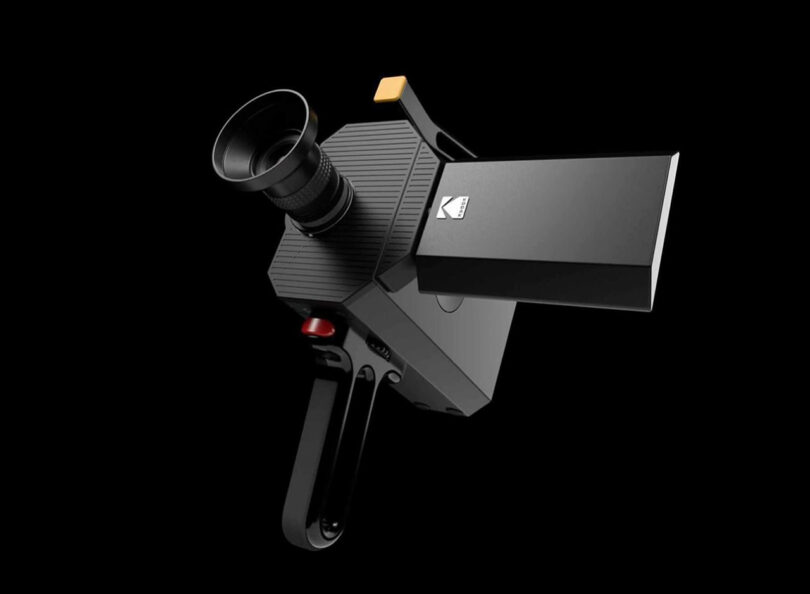Decades before the instant gratification of digital photography/video and the entire social media universe that would appear to glom onto it transforming our collective lives, memories were more humbly captured onto Super 8mm film. The accessible cartridge and battery-based format helped democratize filmmaking globally, and from its launch in 1965 and onward, Super 8 remained a beloved medium for amateur filmmakers, artists, and regular households inclined to immortalize anything and everything onto film. Even today its vintage grainy quality is identified as the original nostalgic aesthetic filter.
Now 50 years later the Kodak Super 8 film camera officially returns, refreshed and reinterpreted for the era of digital video by Yves Behar’s multidisciplinary design studio, fuseproject.
But wait, wasn’t the new Kodak Super 8 announced way back in 2016 at the Consumer Electronics Show? Those with a good memory are recollecting correctly, as the “homage to film” updated with a pistol grip handle, 4-inch LCD viewing screen, new materials, and other updated details attributed to fuseproject was indeed unveiled nearly 8 years ago. In time, excitement for its return quelled with only a trickle of news from Kodak every few years.
The new Super 8 is a hybrid aimed at professional and amateur filmmakers operating with a digital workflow, but desiring the aesthetic of analog filmmaking, including the characteristic sound of the film reel, the texture of the imagery, and the limited amount of reel time shooting with the format.
Announced by fuseproject via Instagram the first week of December, the hybrid camera is now a reality. Differing from its progenitor, the Super 8 now captures video onto film in a 1.5:1 aspect ratio, with a built-in microphone saving audio onto SD card. From the sample clips provided by Kodak, the camera does seem to capture the nostalgic vibe in convincing form.
Unlike digital capture, would-be filmmakers need to factor in cost when shooting using the Super 8 format. As report by DP Review, even when shooting at an old-timey authentic stuttering 18fps, you’ll go through “an entire film cartridge in just 3 minutes and 20 seconds” or “just two and a half minutes per cartridge” when shooting at 24fps.
Everything sounded promising until we learned about the price attached to this stroll down memory lane. Kodak once touted a price tag between $400-$750 for the revitalized design. Not cheap, but well within the realm of an affordable gateway into the art and craft of filmmaking using film. Today’s reality is a $5,495 camera that includes a 6mm F1.2 lens, a pistol grip with trigger, and various accessories including a Pelican carrying case, sadly making software filters still a more accessible and affordable option.
